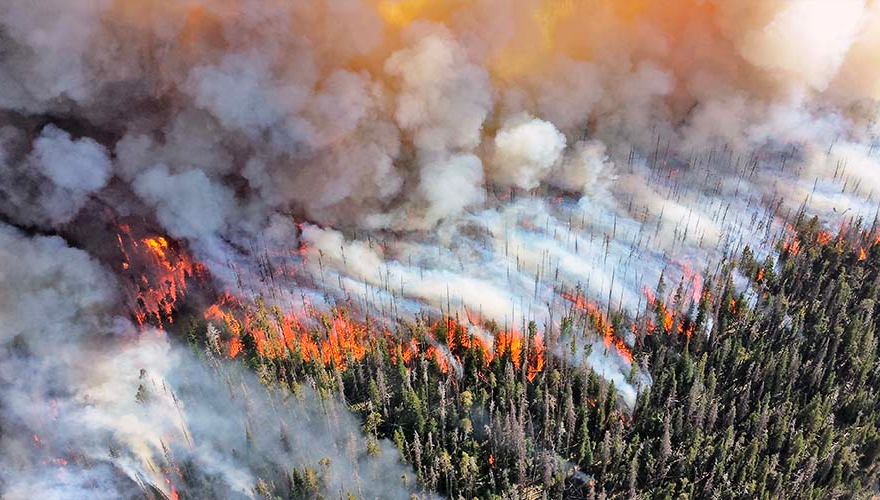Nov. 2021 Science Corner | “Wildfire, Smoke, and Outdoor Recreation in the Western United States”


So, how much does wildfire season actually impact outdoor recreation across the Western US? In their recent paper, Wildfire, Smoke, and Outdoor Recreation in the Western United States, Jacob Gellman, a PhD student at the University of California, Santa Barbara, and his colleagues at Resources for the Future, an economic think tank, set about finding out the answer to that very question.
Authors: Jacob Gellman, Margaret Walls, and Matthew J. Wibbenmeyer
Interview and story by: Kim Quesnel Seipp
For many residents across the Western U.S., summer is a time to get outside and recreate on our beautiful public lands. Outdoor recreation has become increasingly popular in recent years, especially during the pandemic as people looked for leisure activities they could do outside. This high demand means that many people make plans and reserve campsites and trail permits months in advance. Unfortunately, growing interest in outdoor recreation now competes with an increasingly long fire season, meaning that heavy wildfire smoke and heightened fire danger can derail many people’s plans.
So, how much does wildfire season actually impact outdoor recreation across the Western US? In their recent paper, Wildfire, Smoke, and Outdoor Recreation in the Western United States, Jacob Gellman, a PhD student at the University of California, Santa Barbara, and his colleagues at Resources for the Future, an economic think tank, set about finding out the answer to that very question.
“There was a big gap in the literature in terms of estimating wildfire and wildfire smoke impacts at fine grain level for the entire Western US” Gellman explained. “There are a lot of regionally focused studies, but we had access to a really big, administrative dataset which enabled us to see the broader picture.”
Using high resolution, spatially-explicit visitation data from Recreation.gov, Gellman and his team modeled relationships between wildfires, smoke, and recreation across the West.
In the first part of their study, the authors aimed to quantify how many people are affected by wildfire and smoke each year while recreating on public lands. Through their statistical models, they found that more than 120,000 campground visitor-days per year are located close to an actively burning fire. Even more impactful, however, was the presence of smoke, with almost 400,000 people exposed to adverse smoke conditions.
Building on these first findings, the authors then used data specifically drawn from National Park visitation to see whether visitors actually respond and change their plans due to the wildfire and smoke stressors. They were surprised by the small magnitude of responses to smoke. The relative change in cancellations rates doubled or tripled, but the absolute change was only a 1-2% decrease in campsite reservations.
“There are a few reasons for the lack of action. People might not be aware of smoke, often have constraints on leisure time, and/or don’t want to give up their vacation after having to obtain reservations so far in advance.” said Gellman. “The broad takeaway is that people are really exposed and aren’t changing their plans to account for the risk.”
Gellman is excited about how the work can be used to inform decision making. Demand for recreational resources is growing consistently year after year, and there is a need for more recreation opportunities, which includes protection of public land. At the same time, the necessity for forest restoration and increased fuels treatment to decrease the risk of severe wildfire is clearer than ever.
“Decades of fire suppression have allowed fuels to build up, so continuing management and prescribed burning has the potential to decrease the risk of severe fire,” says Gellman.
This has a real impact on recreation, especially when it comes to the use of prescribed fire as a management tool to reduce the risk of catastrophic wildfires. “Importantly, smoke from severe fire is worse than prescribed burns,” Gellman added. “Prescribed burning projects can be timed during non-peak parts of the recreation season to minimize smoke impacts on recreationists.”